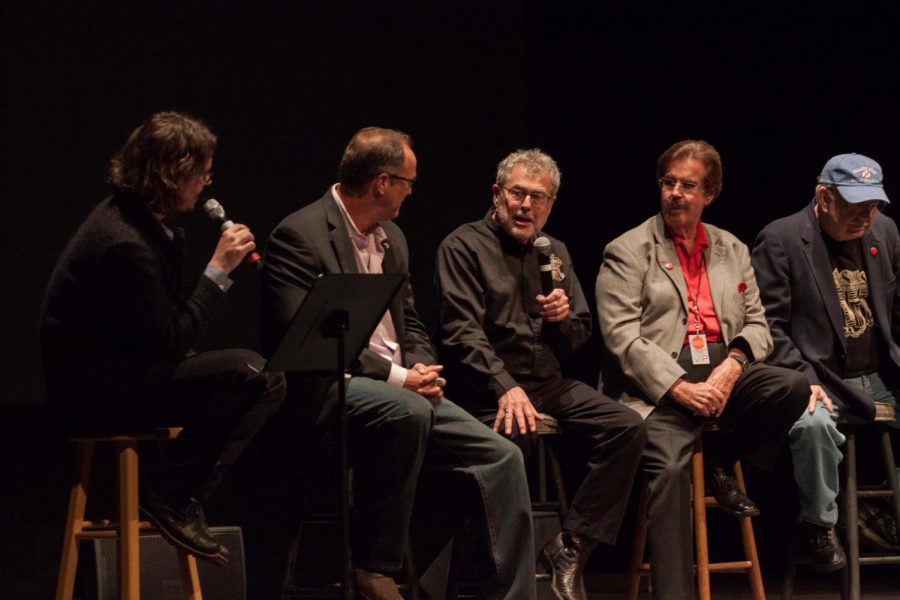Legends of the Shoals
March 7, 2013
The documentary “Muscle Shoals” made its highly anticipated homecoming screening March 1 in UNA’s Norton Auditorium as part of the George Lindsey UNA Film Festival, bringing with it a group of music legends and film personnel involved in its production.
The group present at the screening included Tony Arendt, cinematographer for “Muscle Shoals” and for the 2009 blockbuster “Avatar;” Rick Hall, founder and owner of FAME Studios and one of the main subjects of the film; Jimmy Johnson and David Hood, members of the Swampers (FAME’s legendary rhythm section); and Spooner Oldham, fellow Swamper and inductee into the Rock and Roll Hall of Fame.
Each had a hand in the making of “Muscle Shoals,” which is about the one-of-a-kind musical talent that has come naturally from the area, particularly from FAME Studios.
The documentary was produced by Stephen Badger and directed by Greg “Freddy” Camalier, who felt drawn to the Shoals after passing through while on a road trip from Washington, D.C., to Santa Fe. Neither had produced a film but devoted the next four years to this one.
“Muscle Shoals” has been turning heads since its January premiere at the Sundance Film Festival in Park City, Utah, almost 1,700 miles away from the Shoals.
“It’s a story that rings a chord with everybody, whether you’re from here or across the country,” said Rodney Hall, Rick’s son and president of FAME Studios.
Shoals native and Grammy Award-winning musician John Paul White coordinated entertainment and hosted the evening.
After a brief introduction from White, the documentary began.
From start to finish, the documentary was high energy and entertaining. When the credits rolled, the film received a standing ovation.
Immediately after the screening, White brought Arendt, Hall, Johnson, Hood and Oldham on stage for a Q-and-A session.
Hall, Johnson, Hood and Oldham are all members of the Alabama Music Hall of Fame.
White told the audience that despite their expansive musical careers, the men are still “extremely humble.”
Each spoke briefly about topics like family, musical inspiration, film production and music in the Shoals. Two of the names Hall listed as his inspiration were Sam Phillips and W.C. Handy, both of whom are natives of the Shoals.
“I was terribly impressed and hung on every syllable they spoke,” he said.
Hall also shared about how he got his start in the music industry.
After the screening, Hall’s son Rodney said he believed the movie got the positive reception it deserved from the audience.
Rick had a hand in much of the behind-the-scenes production for the documentary, from scene selection to lining up the artists who appeared in the documentary, including Bono, Aretha Franklin, Etta James, Alicia Keys, Mick Jagger and Keith Richards, to name a few. Every artist who appeared in the documentary contributed without compensation, he said.
He estimated that between 30,000 and 40,000 combined hours of filming were done on five or six different cameras throughout the documentary’s four-year span of production.
“We could make another movie out of what we didn’t use,” he said.
Abby Hood, a UNA student, spoke positively about “Muscle Shoals” after the screening.
“(The documentary) didn’t just talk about music,” she said. “It told the story of humanity and people overcoming obstacles.”
White said a portion of the evening’s proceeds benefit the Alabama Music Hall of Fame and other music programs in the Shoals.












